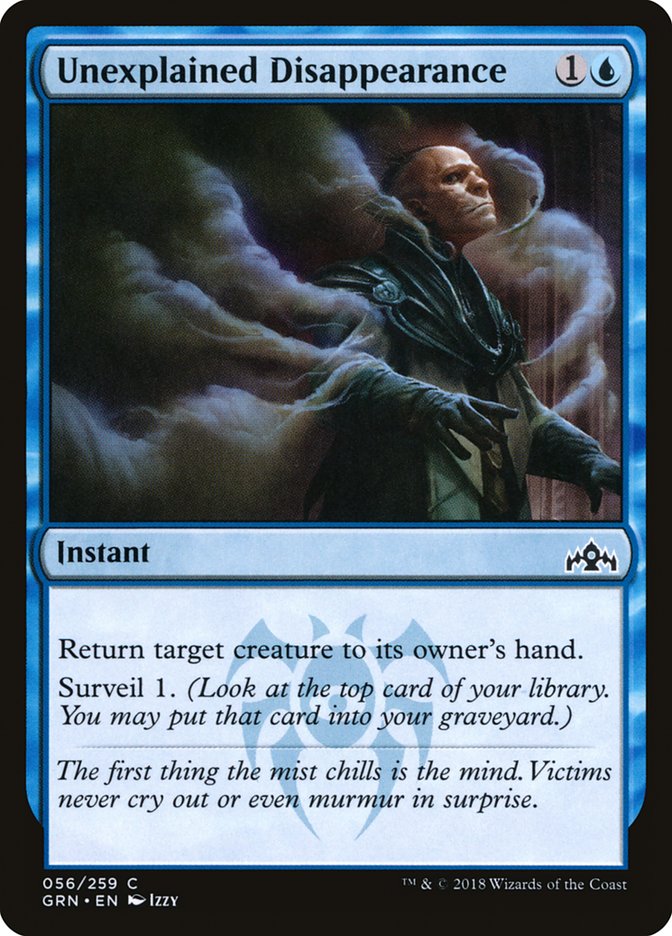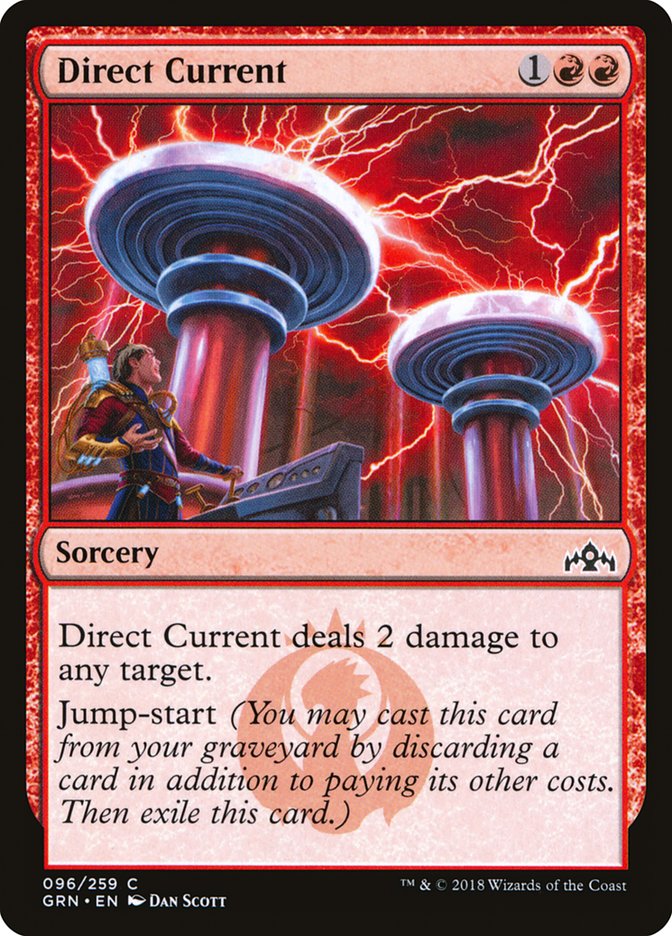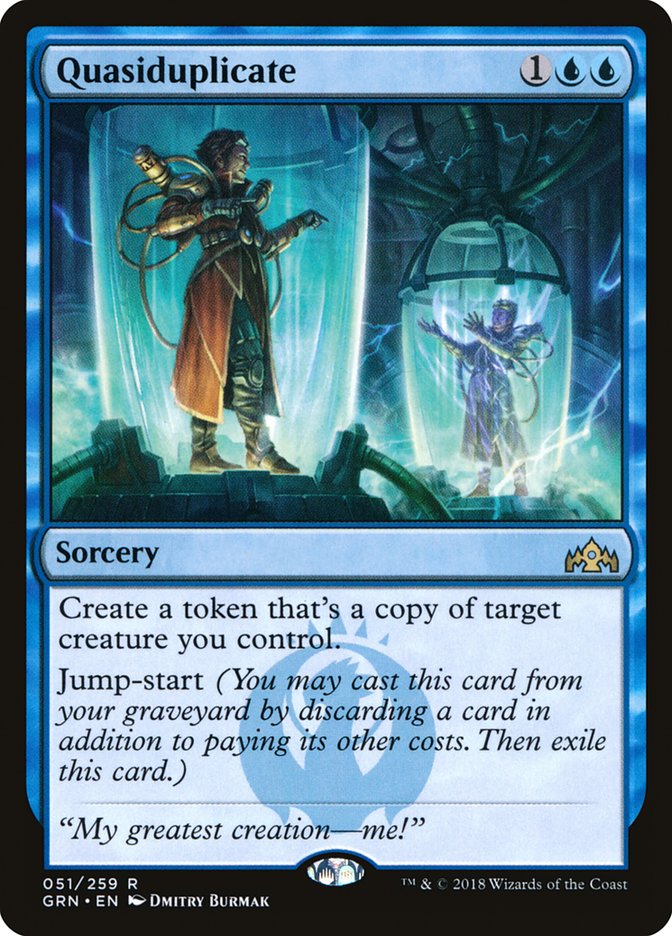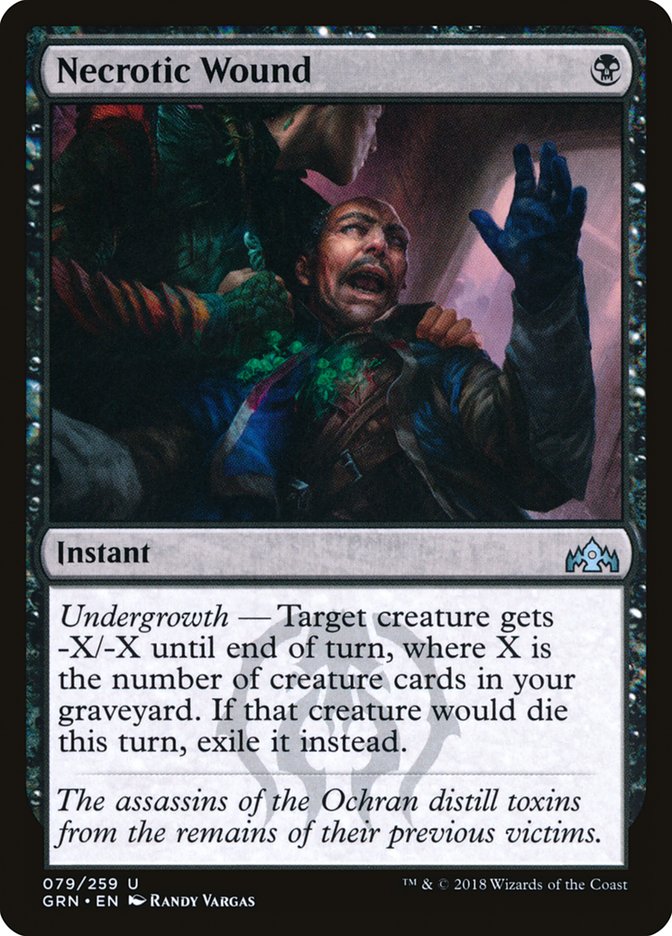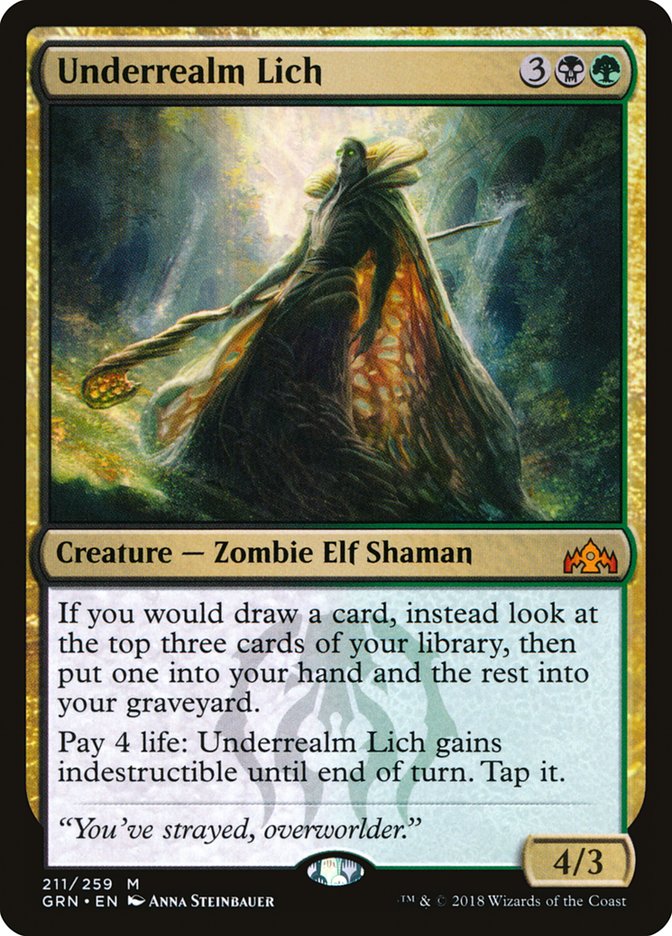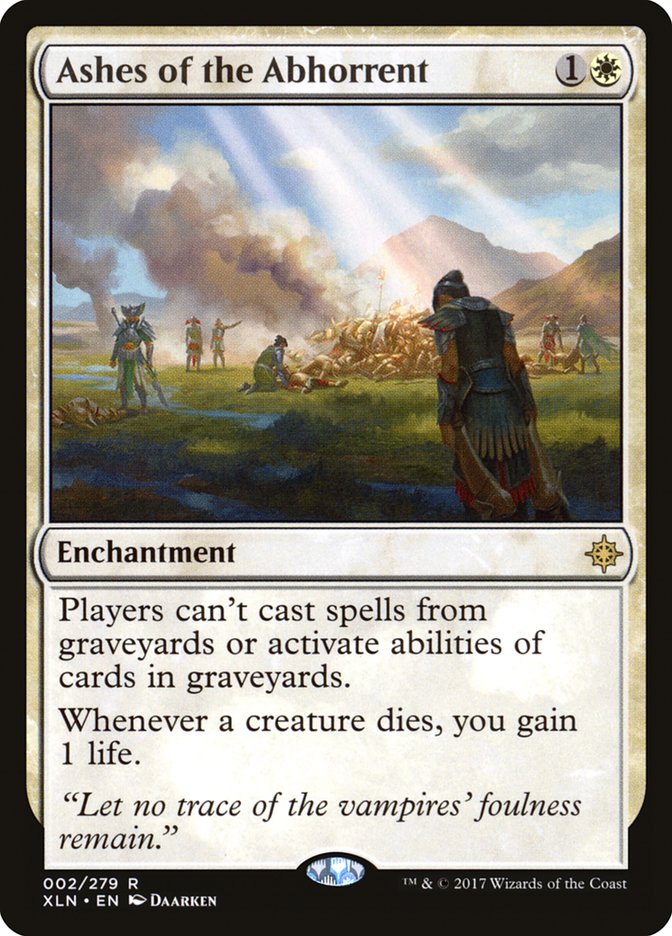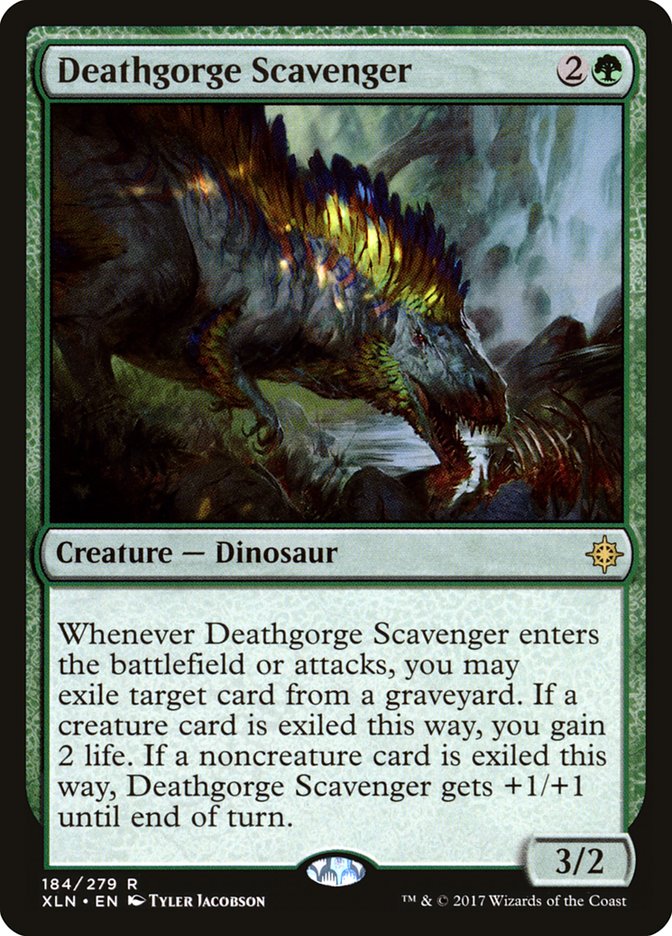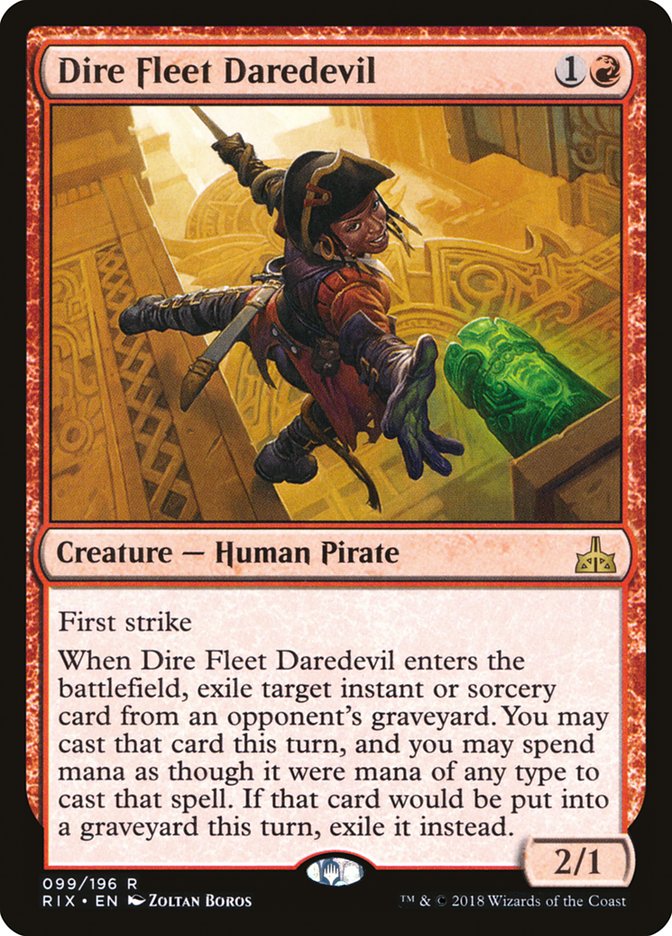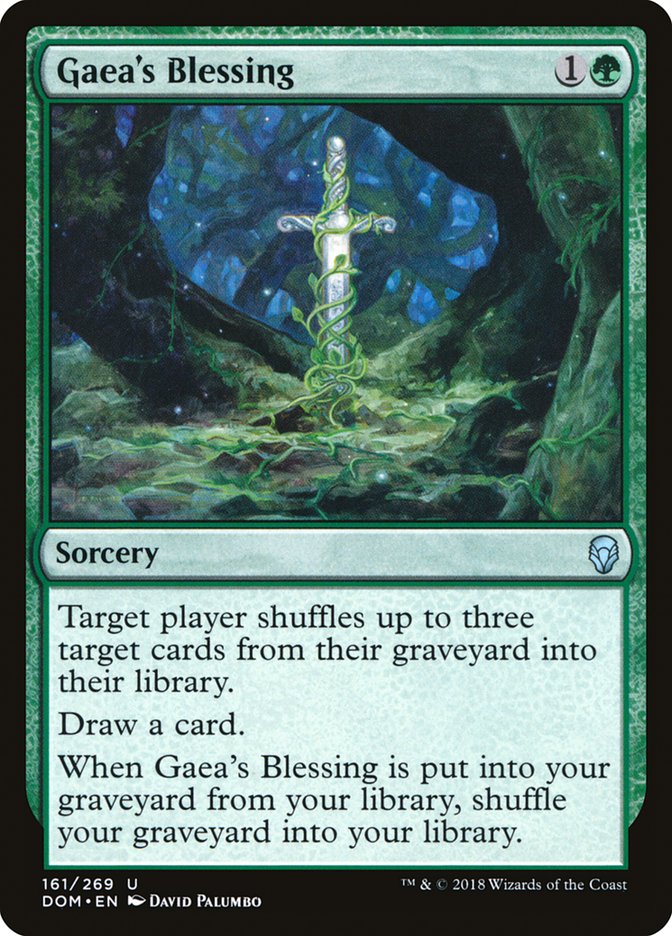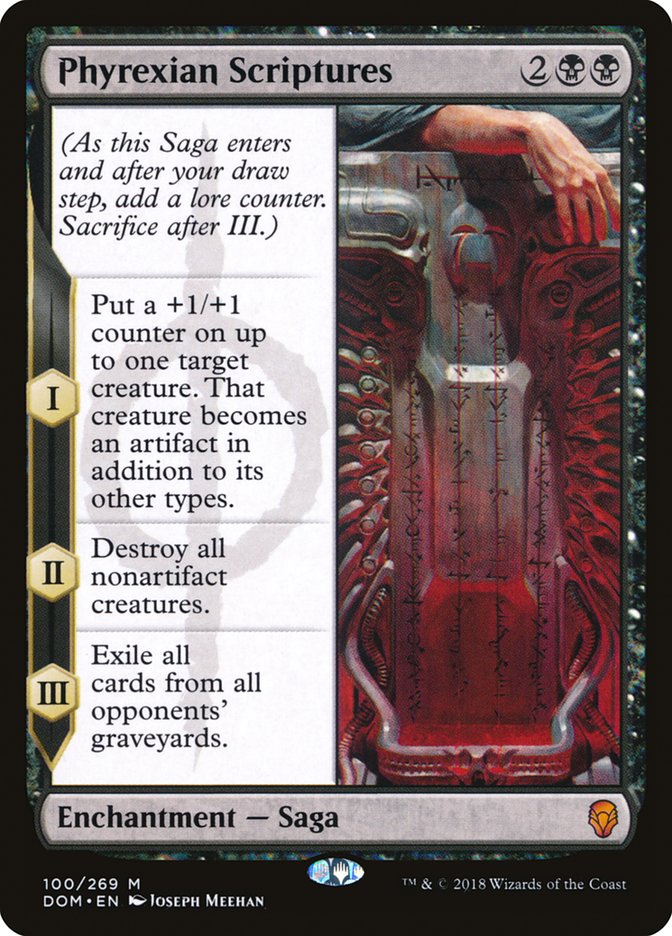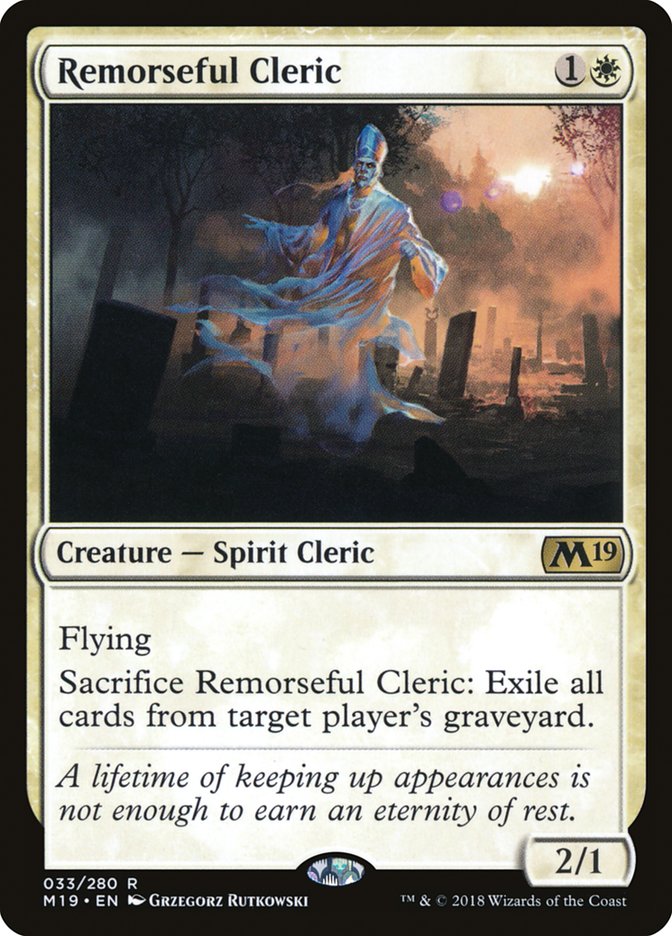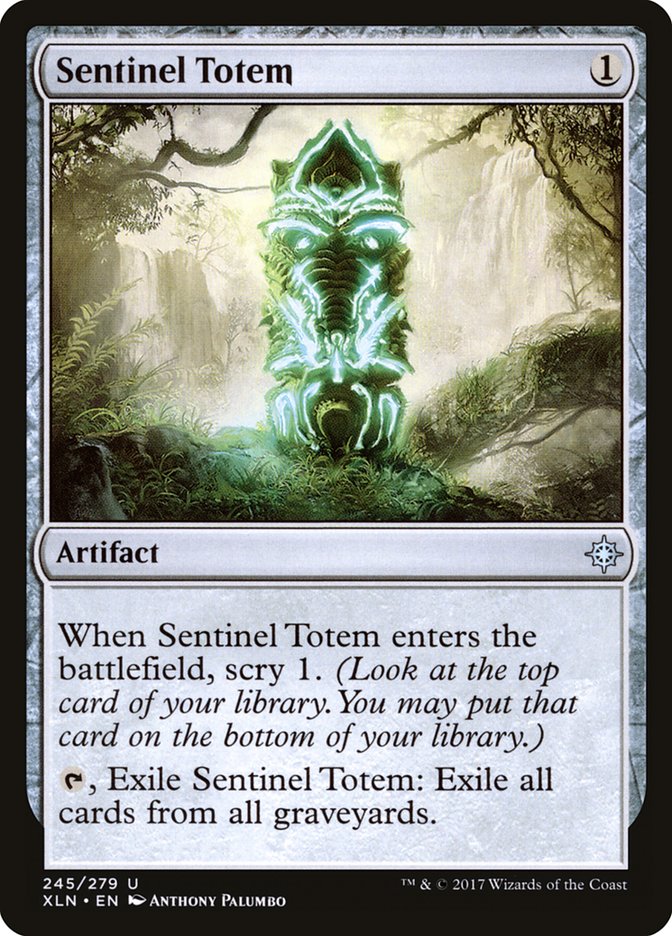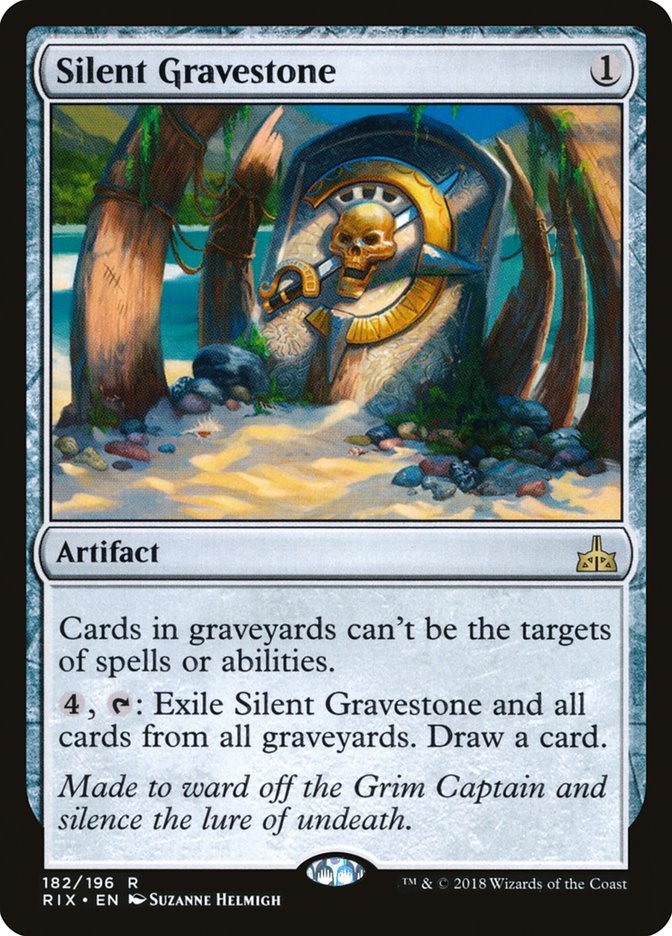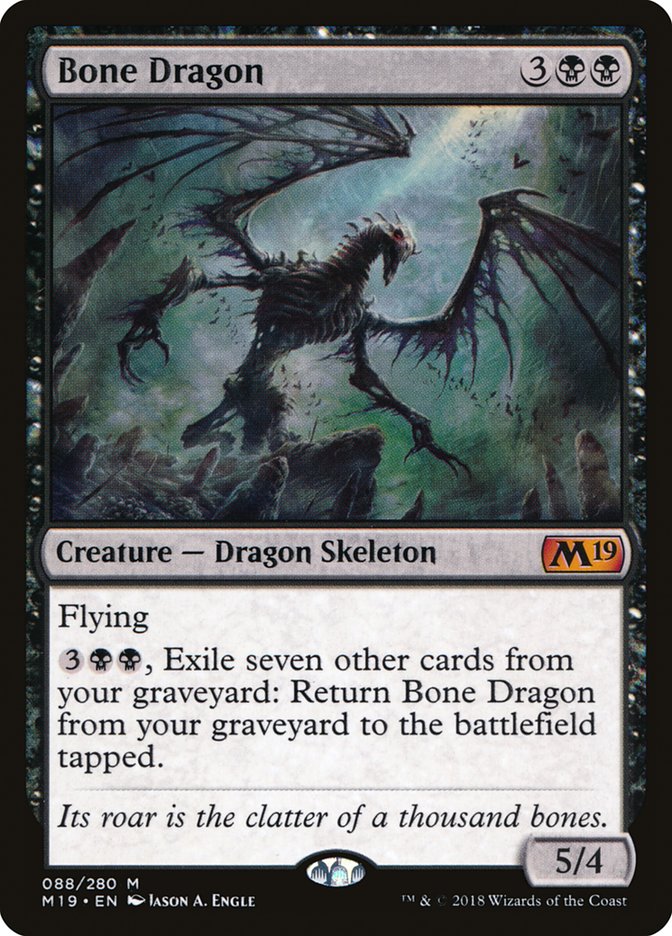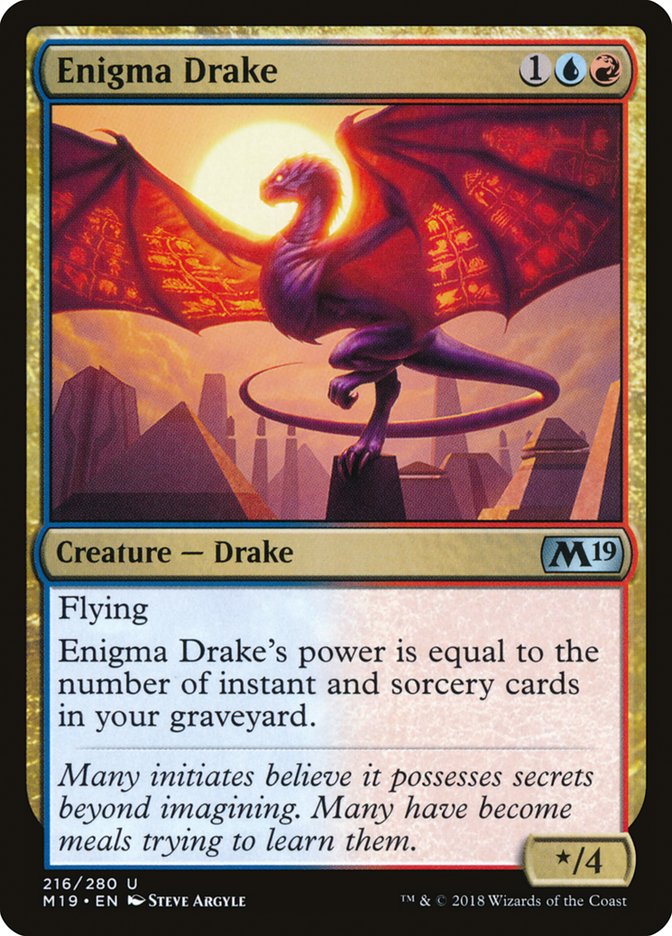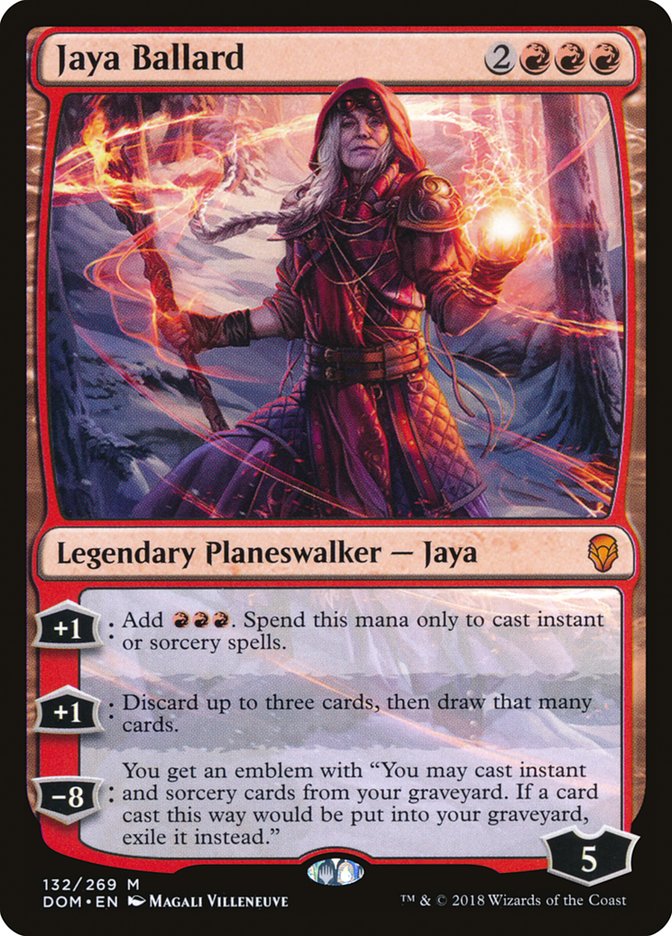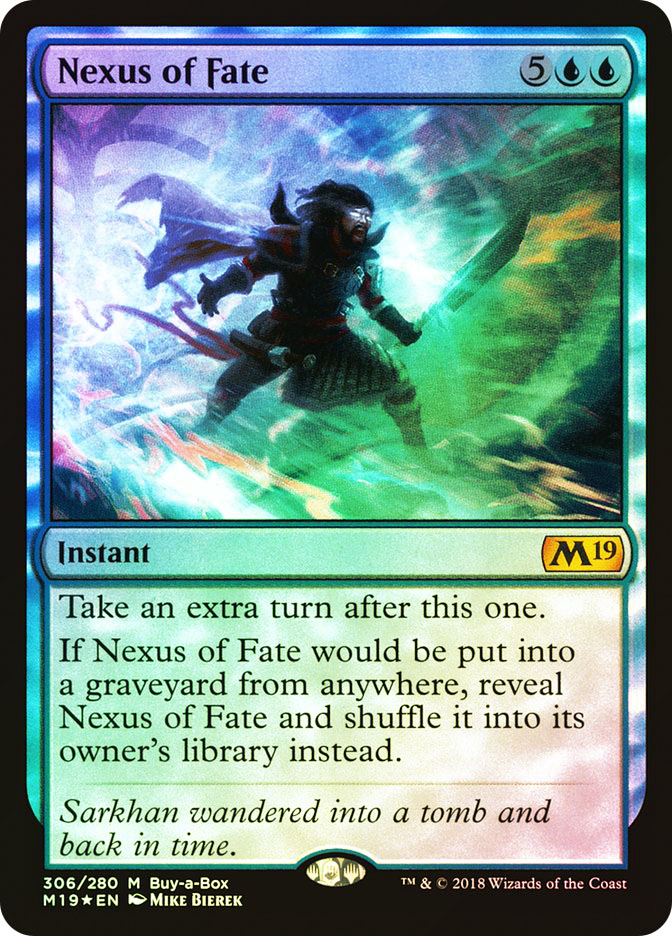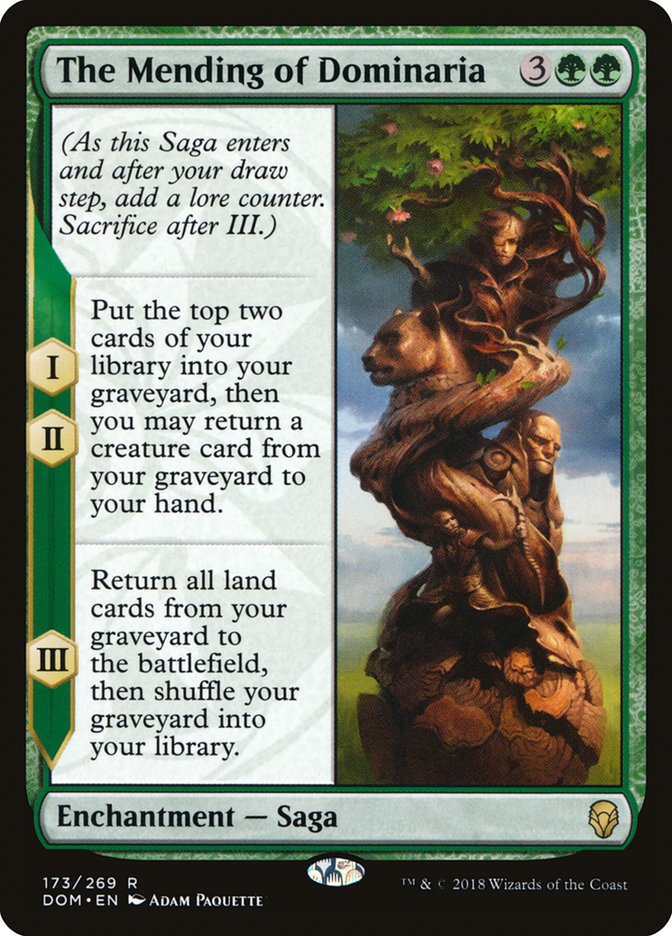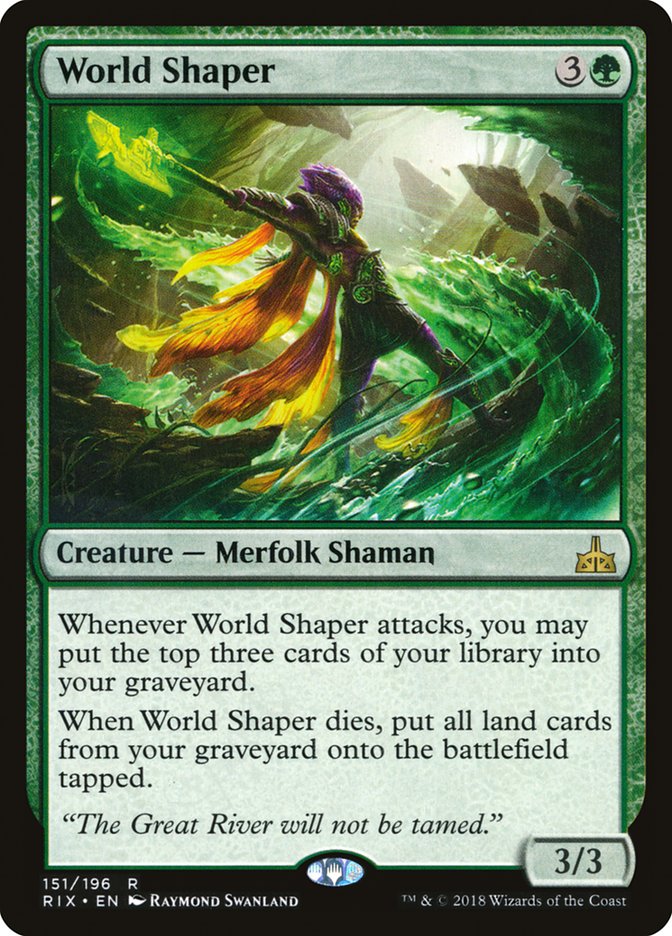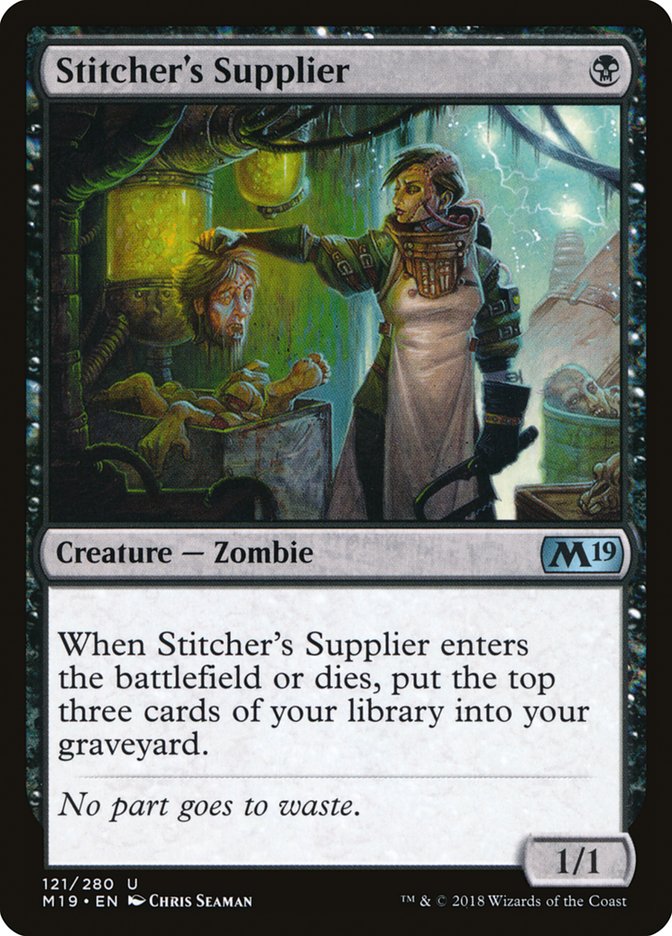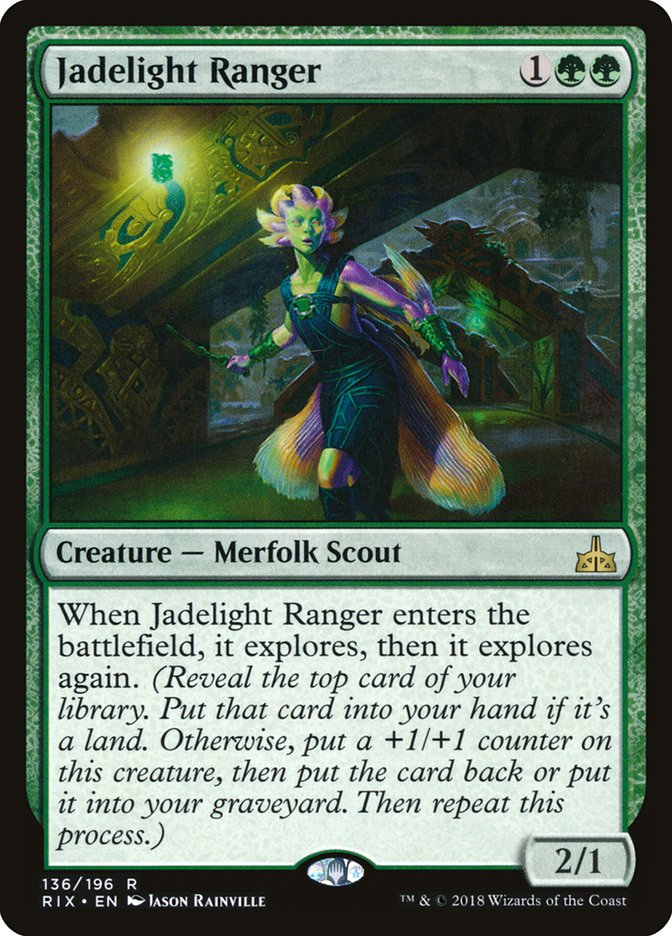We now know the core mechanics for the five guilds of Guilds of Ravnica, and three of them use the graveyard – surveil,
jump-start, and undergrowth – so there’s a good chance that the graveyard
is going to be an especially important zone in Standard after rotation. To
get ahead on figuring out how to take advantage of this, I wanted to take a
look at the cards we’ll have from previous sets that will still be around
in Standard that use the graveyard and how they might fit into a world with
these new mechanics.
To start off, I want to look a little more closely at these mechanics and
note that not all graveyard mechanics are created equal. Surveil is an
enabler mechanic that cares very little about the graveyard itself–if your
opponent has Rest in Peace and you cast a card with surveil, you’ve more or
less just turned surveil into scry, so your card is still usually going to
be serving around 90% of its functionality. Of course, a deck that’s trying
to use surveil as one of many enablers for the graveyard, and then built
around payoffs that use the graveyard will suffer in the face of graveyard
hate, but not all decks with surveil cards will care at all if they don’t
have access to their graveyard.
Next up, jump-start cares a little more about the graveyard than surveil,
in that the card itself intends to get use out of the graveyard regardless
of what else you’re doing, but jump-start cards are generally still
operating above 50% effectiveness without the graveyard, as the total cost
of casting and jump-starting a card is 2*casting cost + discard a card, and
the total effect is 2*text box, but when you don’t have the graveyard, the
cost is just the casting cost, and the effect is just the text box, so you
get half the effect for less than half the cost because you don’t have to
discard a card (or half a card). However, that only covers the times when
you’re planning to cast the card from your hand. If you’re intending to get
value out of a jump-start card going directly from your library to your
graveyard, you will instead get nothing out of it if you don’t have access
to your graveyard, so the jump-start cards you mill rather than draw are
functioning at 0% effectiveness. The point is that graveyard hate can
weaken jump-start cards, but it doesn’t invalidate them.
Finally, we have undergrowth. This is an ability that scales with the
number of creatures in your graveyard, so if your graveyard is being
exiled, the undergrowth text itself will do nothing. How much that hurts
the cards simply depends on how much of their power is tied up in the
undergrowth text. Some might be good without it, and others might be
useless without it, there’s no way of knowing without seeing the exact
card.
Of course, Rest in Peace isn’t legal in Standard unless it’s reprinted in Guilds of Ravnica, so that interaction itself isn’t important.
Let’s pause to take a look at what kind of graveyard hate we might have to
face:
This card completely disables jump-start cards, while not actually
impacting undergrowth in any direct way since creatures will still exist in
graveyards for counting purposes.
This is easy to kill, but while it remains on the battlefield, it functions
optimally against both jump-start and undergrowth, as it can exile
jump-start cards as they enter the graveyard and exile creatures to
decrease the count of undergrowth. It’s even relatively effective against
surveil, as any time your opponent doesn’t want to draw the card they look
at, they have to offer extra fuel to your Deadeye Tracker. This card has
some proven history as a sideboard card as room for substantial growth in
the format.
This is another card that incrementally exiles cards from the graveyard,
which positions it similarly to Deadeye Tracker in that it’s effective
against all the graveyard strategies, but it’s a little slower and needs to
be able to attack, though it requires less investment aside from that,
since you don’t have to spend mana to exile things.
It doesn’t change much about this card, but when you target a jump-start
card, it does remove your opponent’s ability to reuse the card, so that’s a
little extra value in that spot.
One very rarely plays Gaea’s Blessing with the primary gameplan of
targeting the opponent’s cards, but that’s something the card can do. The
low cost makes it comparably effective against undergowth and jump-start,
which is to say, not especially, but it’s a nice touch of additional
utility if you were otherwise in the market for Gaea’s Blessing.
The final stage of this is a one-time exile your opponent’s graveyard.
That’s unlikely to be a key motivator in playing Phyrexian Scriptures, and
so far, it hasn’t been good enough for the first two abilities. This card
is at a power level where I wouldn’t be shocked if it saw play at some
point, but the fact that it attacks the graveyard won’t be the key
motivator there.
Now this is maindeckable straight graveyard hate. If white aggro or Spirits
are popular, this is a card that could easily see maindeck play that offers
substantial counterplay to graveyard strategies. The one-shot nature of the
card makes it relatively weak against jump-start, where you have to decide
when a graveyard is valuable enough to sacrifice this proactively and then
the next jump-start card works fine; whereas this is far more effective
against undergrowth, where you can sacrifice this in response to any
undergrowth ability checking to make it do nothing, and then your opponent
will have to start over on building a graveyard, so future undergrowth
cards will be weaker as well.
This is essentially the same effect as Remorseful Cleric, but it’s
colorless, so any deck can cast it, but it’s symmetrical, so players who
are using their own graveyards will likely want to look elsewhere.
Similarly, this is far more effective against undergrowth than jump-start.
The static ability of this card doesn’t interact with jump-start or
undergrowth in any way and can potentially even protect cards from other
things that would exile them. The activated ability plays like the
activated ability of Sentinel Totem, except that it costs more mana to use,
of course.
That’s the preexisting graveyard hate, so if nothing else is printed in Guilds of Ravnica, graveyards should be relatively safe to play
with, I think, all things considered, especially in game 1s, but it’s worth
noting that Deathrite Shaman, Rest in Peace, and Leyline of the Void all
debuted on Ravnica, so there are certainly no promises that this
set won’t have some kind of extremely effective graveyard hate card.
Next, let’s look at the other payoffs we’ll have in Standard; think of
these as the cards that benefit most from surveil cards being in your deck,
either because you’re hoping to see them and put them in your graveyard or
because they appreciate that other cards will find their way to your
graveyard more often. This isn’t going to be a comprehensive list of every
card that can do something useful with a card in the graveyard. I’m going
to focus specifically on cards that benefit from being in the graveyard or
specifically scale meaningfully with a large graveyard, considering only
cards that I think might have a place in competitive Standard.
I couldn’t really ask for a better example of the kind of card that
benefits from surveil than this. It’s active in the graveyard and wants
exactly for there to be more other cards in the graveyard. It may have
missed when it first came out, but now it won’t be competing with The
Scarab God and its conditions are much easier to fulfil. It also doesn’t
matter that it’s horrible against opposing copies of The Scarab God. This
card could easily be one of the biggest winners of rotation, and, as an
extremely cheap mythic for the moment, it could make a great speculative
purchase.
It’s hard for me to take this card seriously as a Constructed card, but I’m
not sure why. Tempest Djinn is actually very impressive in mono-blue decks,
and Engima Drake is actually easier on your mana most of the time. The
problem with is it that it generally starts smaller when you play it on
turn 3 and attack on turn 4, but what that means is that precisely how
quickly it gets to various amounts of power is a very relevant indicator of
the power of this card, so it’s possible that enough good surveil cards
could actually push this into mainstream Standard playability.
Jaya is more enabler than payoff, but the ultimate is a good payoff for
growing your graveyard. More importantly, it’s worth noting just how well
Jaya plays with jump-start, since those cards are mana sinks, meaning they
work well with the first ability and are active in the graveyard, meaning
they work well with the second ability.
This is another winner of the Bone Dragon Award for maximum participation
in graveyard-related activities. Any way you slice it, Multani loves seeing
more cards go to your graveyard.
This is a bit weird to call as a graveyard synergy, but it’s worth
considering that the more you mill yourself, the smaller your library is,
and the easier it is to find each Nexus of Fate that gets shuffled in.
Yeah, this one didn’t need the help, but I’m not going to pretend all of
this isn’t great news for what might be the most powerful remaining card in
Standard anyway.
Yeah, this one scales well as your graveyard gets bigger.
I still have my eye on this card, which is half enabler, half payoff, half
sad Hill Giant. It’s the third half that’s kept it a little too clunky so
far.
Some of these cards are doing double duty, but I want to highlight a few
others that are just good enablers to make sure that your undergrowth cards
are functioning at the top of their potential and may support your surveil
cards in getting more than the baseline out of your jump-start cards.
Stitcher’s Supplier has a proven record in Modern already as a graveyard
enabler, and I think it has a great chance moving forward as it has great
tribal synergies and an excellent price on powering up your undergrowth
cards well before you’ll want to use them.
Explore in general is, well, remarkably similar to surveil, but worth
paying attention to specifically for graveyard synergies, especially the
cards that let your explore multiple times and/or at a good rate.
These cards outside of Guilds of Ravnica that can feature in
graveyard-centric strategies are positioned to serve as pieces of the
puzzle, but the bulk of these decks, if they come together, is going to
center around the interplay between mechanics and enablers printed in the
set. I suspect that the cross-guild synergies between surveil and
undergrowth or jump-start will be driving forces in Guilds of Ravnica Limited, and then the question is just whether
these cards are printed at competitive rates for Standard or not. If they
are, be sure to keep an eye on the players from other sets, and personally,
I’d pay special attention to Stitcher’s Supplier, Bone Dragon, and Deadeye
Tracker, which I see as the cards with the most room for growth if
graveyard support is robust.


